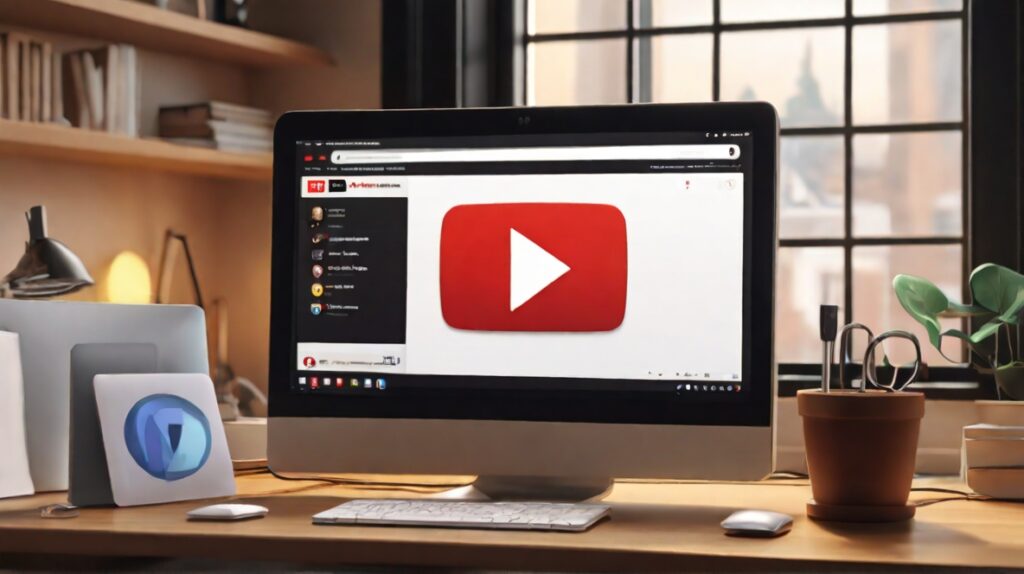If you're a content creator on YouTube, you've probably heard about YouTube Shorts. This new feature allows users to create and share short-form content on the platform, similar to TikTok. But how does the YouTube Shorts algorithm work, and how can you optimize your content to reach more viewers?

The YouTube Shorts algorithm uses a variety of signals to determine which videos to show to users. These signals include view rate, watch history, similar content, relevance, and engagement. By analyzing these signals, the algorithm can determine which videos are most likely to be of interest to each individual user.
As a content creator, it's important to understand how the YouTube Shorts algorithm works so that you can optimize your content for maximum visibility. By creating engaging videos that are relevant to your audience and using keywords and hashtags to make them easy to find, you can increase your chances of getting your content seen by more users.
Understanding the YouTube Shorts Algorithm
Algorithm Basics
The YouTube Shorts algorithm is a set of rules that determines which videos to show each viewer based on a number of factors. It uses signals such as user behavior and video topics to predict which videos users want to watch. Compared to the traditional route of using impressions to test your content, the YouTube Shorts algorithm is more straightforward. The algorithm is constantly changing, so it's important to stay up-to-date on the latest trends and best practices.
Factors Influencing the Algorithm
There are several factors that influence the YouTube Shorts algorithm. One of the most important factors is the number of views a video receives. Views are king in the world of Shorts. The more views a video has, the more likely it is to be recommended to other users. However, it's not just about the number of views. The algorithm also takes into account the engagement rate of the video, including likes, comments, and shares.
Another factor that influences the algorithm is the length of the video. Since Shorts are short-form videos, the algorithm favors videos that are 60 seconds or less. The algorithm also favors videos that are visually engaging, with bright colors and high contrast. Additionally, the algorithm takes into account the quality of the video, including the resolution and frame rate.
Shorts vs. Long-Form Content
The YouTube Shorts algorithm is different from the algorithm used for long-form content. While long-form content is optimized for watch time and session time, Shorts are optimized for views and engagement. This means that the algorithm for Shorts is more focused on individual videos, while the algorithm for long-form content is more focused on the overall viewing experience. Additionally, the algorithm for long-form content takes into account factors such as watch time, session time, and audience retention, while the algorithm for Shorts is more focused on user engagement.
In conclusion, understanding the YouTube Shorts algorithm is crucial for creating successful Shorts. By focusing on factors such as views, engagement, and video quality, you can increase your chances of being recommended to other users. However, it's important to remember that the algorithm is constantly changing, so it's important to stay up-to-date on the latest trends and best practices.
YouTube Shorts Algorithm: Maximizing Viewer Engagement

To get your YouTube Shorts content in front of more people, you need to maximize viewer engagement. Here are some tips to help you do just that:
Creating Compelling Content
The first step to maximizing viewer engagement is creating compelling content. You need to create content that is interesting, entertaining, and informative. Use your creativity to come up with unique ideas that will capture the attention of your audience. Keep in mind that your content should be short and sweet, as YouTube Shorts videos are limited to 60 seconds.
Optimizing for Watch Time
Watch time is a key metric that YouTube uses to rank videos. The longer people watch your Shorts, the higher your video will rank in the algorithm. To optimize for watch time, you need to create content that is engaging from start to finish. Use storytelling techniques to keep your audience hooked and make sure your video has a clear beginning, middle, and end.
Encouraging Interaction
Encouraging interaction is another way to maximize viewer engagement. You want your audience to like, share, and comment on your Shorts. The more engagement your video receives, the higher it will rank in the algorithm. To encourage interaction, ask your audience to like, share, and comment on your video. You can also use polls and other interactive features to get your audience involved.
Remember, maximizing viewer engagement is key to getting your YouTube Shorts content in front of more people. Use these tips to create compelling content, optimize for watch time, and encourage interaction. By doing so, you'll be well on your way to growing your audience and increasing your views.
YouTube Shorts Algorithm: Strategies for Content Creators
As a content creator, you want to ensure that your YouTube Shorts are being seen by as many people as possible. Here are some strategies to help you achieve that goal.
Consistency and Frequency
Consistency is key when it comes to building an audience on YouTube Shorts. You should aim to post new Shorts regularly, ideally on a daily basis. This will help keep your audience engaged and coming back for more.
When it comes to frequency, you should aim to strike a balance between posting enough Shorts to keep your audience engaged, but not so many that you overwhelm them. Experiment with different posting schedules to see what works best for you and your audience.
Leveraging Analytics
YouTube Shorts provides a wealth of analytics data that you can use to optimize your content and improve your reach. Pay attention to metrics such as views, likes, comments, and shares, and use this data to identify which Shorts are performing well and which ones need improvement.
You can also use analytics to identify trends and opportunities for new content. For example, if you notice that a particular type of Shorts is performing well, you can create more content in that style to capitalize on the trend.
SEO and Discoverability
SEO (Search Engine Optimization) is the process of optimizing your content to improve its visibility in search engine results. This is important because it can help your Shorts reach a wider audience.
To optimize your Shorts for SEO, you should focus on the titles, descriptions, tags, and thumbnails. Make sure that your titles and descriptions are clear and descriptive, and include relevant keywords. Use tags to help categorize your content and make it easier to find. Finally, create eye-catching thumbnails that will entice viewers to click on your Shorts.
In addition to SEO, you can also improve the discoverability of your Shorts by using hashtags. Hashtags are a great way to categorize your content and make it easier for viewers to find. Use relevant hashtags in your titles, descriptions, and tags to improve the discoverability of your Shorts.
Overall, by being consistent with your posting schedule, leveraging analytics to optimize your content, and using SEO and discoverability tactics, you can increase the visibility of your YouTube Shorts and reach a wider audience.
YouTube Shorts Algorithm: Monetization and Growth

If you're looking to monetize your YouTube Shorts, you'll need to meet certain criteria, such as having at least 1,000 subscribers and 4,000 hours of watch time in the past 12 months. Once you meet these requirements, you can apply for the YouTube Partner Program to start monetizing your Shorts.
Monetizing Shorts
Monetizing Shorts can be done through various methods, such as ads, merchandise, and super chats. However, Shorts is still a relatively new feature, and it's unclear how exactly monetization will work on this platform. One way to monetize your Shorts is by using popular music in your videos, as YouTube has a Creator Fund that pays creators who use licensed music in their Shorts.
Building and Retaining an Audience
To grow your audience on Shorts, it's important to create engaging content that's tailored to your target audience. You can use data and analytics to determine what type of content resonates with your viewers and adjust your content accordingly. Additionally, you can use social media and other platforms to promote your Shorts and drive traffic to your channel.
Retaining your audience is just as important as building it. You can do this by consistently uploading high-quality content and engaging with your viewers through comments and other forms of interaction. This will help build a loyal following that will keep coming back for more.
In conclusion, monetizing your Shorts and growing your audience takes time and effort, but it's possible with the right strategy and approach. By creating engaging content, promoting your channel, and building a loyal following, you can monetize your Shorts and achieve success on this platform.





